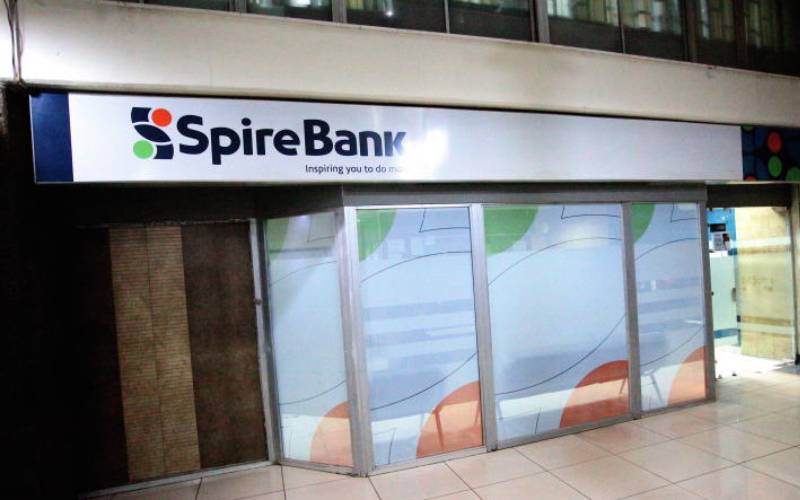A crunch meeting of delegates of the gigantic Mwalimu National Sacco has been called this Saturday to discuss the state and fate of the loss-making Spire Bank — the troubled financial institution that the teachers’ body bought from corporate magnate Naushad Merali more than five years ago. Merali has since died.
I’ve decided to comment on this subject because I feel that we, in the financial and business press tend to give short shrift to coverage of major developments in the deposit-taking sacco sector. We play down the fact that this sector occupies a critical space in our financial system.
The combined balance sheet of deposit-taking saccos regulated by the Sacco Society Regulatory Authority (Sasra) is upwards of Sh350 billion. Mwalimu Sacco has a balance sheet size of Sh57 billion, bigger than a good number of Tier 2 banks.
And in terms of outreach, front office activities of deposit-taking saccos have a more extensive branch network than commercial banks. Nearly all citizens in formal employment in this country are members of one deposit-taking sacco or another.
I paint this broad brush as an entry point to a discussion on ongoing restructuring of the debt-ridden bank’s shareholding.
Mwalimu Sacco
I gather from the grapevine that Mwalimu Sacco is on the cusp of offloading its majority stake in Spire Bank to a new investor in a complex merger and acquisition deal that is designed to set the sacco free from the worst investment debacle it has made since its inception nearly 50 years ago.
Indeed, this botched acquisition has left the teacher’s sacco carrying a banking subsidiary with accumulated losses of a whopping Sh8 billion.
The details of the transaction are still scanty because the negotiating parties are not speaking openly having signed non-disclosure agreements binding them to secrecy. But from what I’m able to discern from confidential discussions with the parties involved in the negotiations and some of the investors who have put in bids, all indications are that a deal could be struck in a matter of months.
Is the restructuring proposal on the table feasible? I think so, especially since it does not require a taxpayer-funded bailout.
From what I gather, the shareholding structure under negotiation has six parts. First, the centrepiece of the transaction is that Spire Bank is to be sold to a local Tier 1 bank under an arrangement whereby the investor will take a controlling stake while leaving the teachers with a sizeable enough stake to make it possible for the bank to retain its character as a teachers’ bank and prepare it to be rebranded later as Mwalimu Bank.
Major capital injection
Secondly, a major capital injection to bring the bank into compliance with most of the Central Bank’s regulatory ratios. Thirdly, further injections of both capital and liquidity be staggered to allow for due diligence to progress even as the bank is put back to normal operations.
Fourth, the new bank become the exclusive corporate banker to Mwalimu Sacco. Fifth, the receipts from the sale be deposited in the bank in a fixed deposit account for five years.
Finally, the deal obliges the investor to make large and prescribed fixed deposits that are to be on auto-rollover for five years.
As we went to press, the race was down to two local Tier 1 banks.
Which begs the question: What explains the rather large investor appetite in this otherwise technically insolvent bank?
The way I see it, two things make the proposal attractive to the big boys. First, Spire Bank is an attractive proposal for a big boy interested in a second banking licence to enable it to enter a market segment that is not covered by its existing brands.
Mass market
It seems Spire Bank could very well end up being grabbed by a high-end Tier 1 bank interested in having or extending its footprint in both the mass market, but especially the ecosystem that is currently served by Mwalimu Sacco.
Secondly, the bank can also be attractive to a foreign bank keen on entry into the clearing house and in becoming a settlement member. Indeed, settlement is what allows you to access the national payments space, where most of the greatest innovations in the financial sector happen.
But for Mwalimu Sacco and its sick subsidiary to be saved and for this transaction to fly, the full support from the government, especially the National Treasury will be critical.
The Central Bank of Kenya, the primary regulators of the banking sector, and Sasra, the regulator of sacco sector — must be prepared to support the process in terms of enhanced regulatory forbearance.
The government must come out strongly and move to support this transaction because what is at stake has implications on both the welfare of the teaching fraternity that represents the largest body of formal sector workers in this economy. BY DAILY NATION
There's no story that cannot be told. We cover the stories that others don't want to be told, we bring you all the news you need. If you have tips, exposes or any story you need to be told bluntly and all queries write to us [email protected] also find us on Telegram

